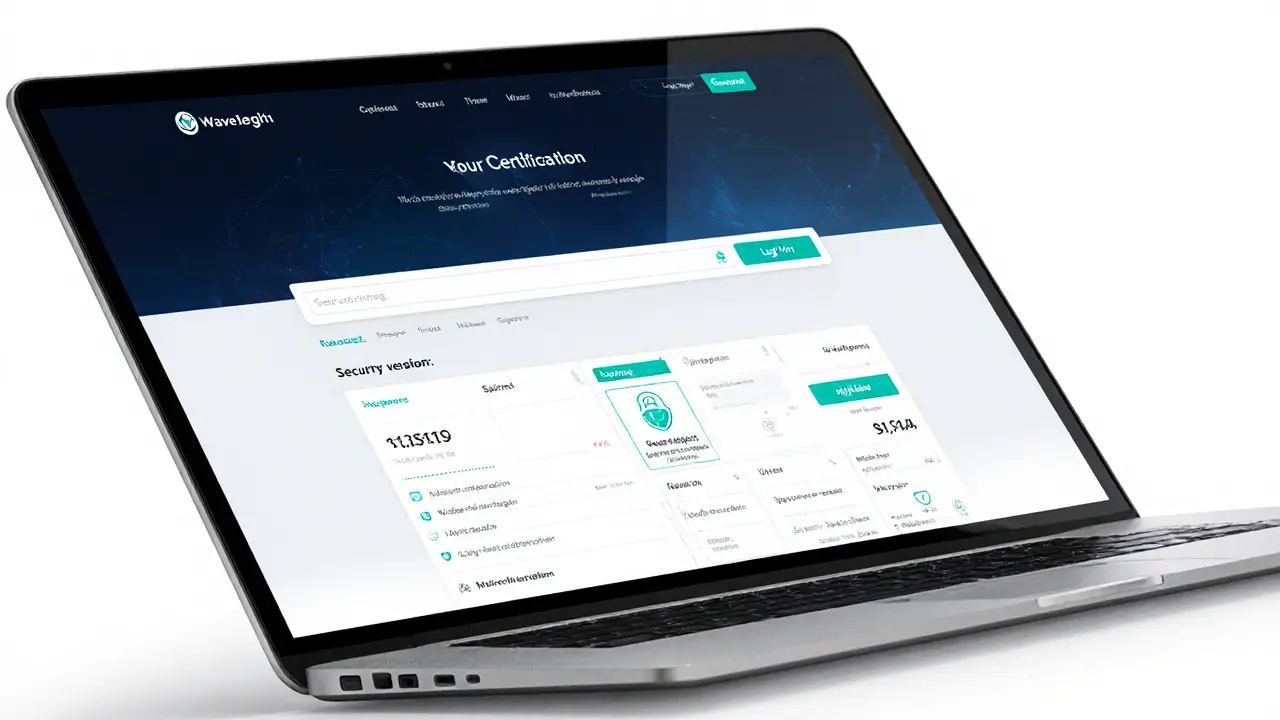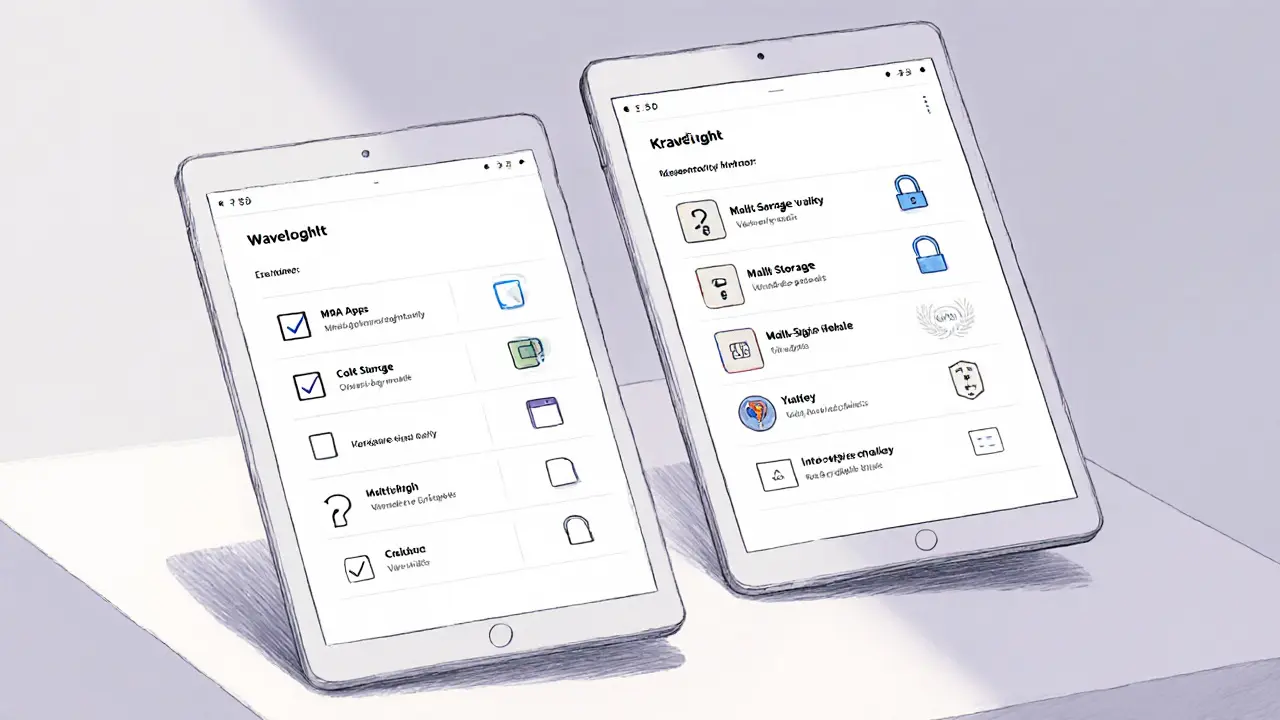Wavelength Crypto Exchange Review 2025 - Security, Fees & Features

Crypto Exchange Security Checklist Calculator
Evaluate Your Exchange Security
Based on industry standards from exchanges like Kraken, this tool helps you assess if your crypto exchange meets minimum security requirements. Check which features are present to understand your risk level.
Security Checklist
Security Assessment Results
Key Recommendations
This Wavelength crypto exchange review dives into what you can actually verify about the platform, how it stacks up against industry standards, and which red flags to watch for before committing any funds.
Key Takeaways
- Wavelength lacks publicly disclosed security certifications or audit reports.
- Fee structure is not transparent; users must rely on on‑site calculators.
- Customer‑support channels are limited to email and a basic ticket system.
- Regulatory compliance appears ambiguous - no clear licensing information is posted.
- When measured against proven exchanges like Kraken, Wavelength falls short on most critical criteria.
What is Wavelength Crypto Exchange?
Wavelength Crypto Exchange is marketed as a "next‑gen" trading platform that supposedly combines spot, futures, and staking services under one web‑based interface. The company’s website offers a sleek design, but it provides no verifiable corporate registration, no audited financial statements, and no third‑party security attestations.
How to Evaluate a Crypto Exchange - The Core Checklist
Before you decide whether to trust any platform, run through a practical checklist. The steps below are derived from best‑practice guidelines used by vetted exchanges such as Kraken and industry‑wide security standards.
- Verify regulatory licensing - look for EU, US, or reputable offshore licenses.
- Confirm security measures: multi‑factor authentication, cold storage, encryption, and audit reports.
- Check fee transparency - clear maker‑taker rates, withdrawal fees, and any hidden costs.
- Assess liquidity - depth charts on major pairs and average daily volume.
- Test customer support - response times, live chat availability, and community presence.
Feature Checklist for Wavelength
Based on what the platform publicly shares, here’s a quick rundown of claimed features versus what we can verify.
- Spot trading - listed but order‑book depth is not displayed.
- Futures contracts - advertised, yet contract specifications are vague.
- Staking - only a few coins, no clear reward rates.
- API access - documentation is limited; no mention of Hardware security module protection.
- Security - the site mentions Multi-factor authentication and Cold storage, but provides no third‑party audit links.

Comparison Table: Wavelength vs. Industry Standard
| Feature | Wavelength (claimed) | Industry Standard (Kraken) |
|---|---|---|
| Regulatory license | Not disclosed | US & EU licensed |
| Cold storage | Yes - no audit | 99% funds cold‑stored, regular audits |
| Multi‑factor authentication | SMS & Google Authenticator | FIDO2, YubiKey, Authenticator apps |
| KYC / AML | Basic ID check | Enhanced KYC, transaction monitoring |
| DDoS protection | Unspecified | Cloud‑scale mitigation, auto‑scaling |
| Multi‑signature wallets | Not mentioned | 2‑of‑3 multi‑sig for withdrawals |
| Withdrawal whitelist | No clear UI | Enabled by default |
| Insurance coverage | None advertised | Third‑party insurance for custodial assets |
Security Assessment
Security is the make‑or‑break factor for any exchange. Here’s how Wavelength measures up against recognized safeguards.
- Multi-factor authentication: The platform offers SMS and authenticator apps, but it does not support hardware tokens (e.g., YubiKey) which are considered best‑in‑class.
- Cold storage: Claims 100% cold storage for the majority of assets, yet no third‑party audit or proof‑of‑reserve report is available.
- KYC & AML: The onboarding flow asks for ID and selfie, but there is no mention of transaction monitoring or sanctions screening.
- DDoS protection: The website runs on standard hosting; no CDN or mitigation service is disclosed, which raises reliability concerns during traffic spikes.
- Multi-signature wallet: Not referenced anywhere, indicating that withdrawals likely rely on single‑key control - a higher risk profile.
- Hardware security module: No evidence of HSM usage for API key storage or master key protection.
In short, the security posture appears minimal compared with exchanges that publish audit reports, engage reputable custodians, and support hardware‑based MFA.
User Experience & Support
The UI is clean, but the lack of live chat and limited documentation hinder new users. The help centre contains only a handful of articles, and ticket response times can stretch beyond 48hours. Community presence is thin - there is no active Discord or Telegram channel, and Reddit threads contain few credible discussions.
Regulatory & Compliance Landscape
Regulatory clarity is essential for protecting user funds. Wavelength’s website does not list any licensing authority, jurisdiction, or compliance certifications (e.g., FATF, EU MiCA). In contrast, established exchanges like Kraken hold multiple licenses and regularly file reports with financial regulators. Without transparent licensing, users may face challenges withdrawing funds if the platform faces legal scrutiny.
Pros and Cons
- Pros
- Modern UI design.
- Offers spot, futures, and staking on a single platform.
- Basic KYC process is quick.
- Cons
- Security claims lack third‑party verification.
- Fee schedule is opaque.
- No clear regulatory licensing.
- Limited customer‑support channels.
- Missing advanced safety features like multi‑sig wallets and HSM protection.
Bottom Line - Should You Trade on Wavelength?
If you value transparency, audited security, and solid regulatory footing, it’s safer to gravitate toward proven platforms such as Kraken or other exchanges that publish comprehensive security reports. Wavelength might appeal to early adopters who are willing to experiment, but the current lack of verifiable data makes it a higher‑risk choice.
Frequently Asked Questions
Is Wavelength Crypto Exchange licensed?
The platform does not display any licensing information on its website, so users cannot verify whether it holds a regulator‑approved license in any jurisdiction.
What security measures does Wavelength claim to have?
Wavelength mentions multi‑factor authentication, cold storage, and basic KYC, but it provides no audit reports, multi‑signature wallets, or hardware security module details.
How do the fees compare to major exchanges?
Fee information is only available through an on‑site calculator and is not broken down by maker/taker tiers, making direct comparison difficult.
Can I use an API for automated trading on Wavelength?
API documentation exists, but it lacks details on key protection (e.g., HSM) and rate‑limit policies, which are essential for institutional traders.
Is there any insurance coverage for assets on Wavelength?
No insurance or custodial guarantee is advertised, unlike many regulated exchanges that hold third‑party coverage for custodial assets.


Kaitlyn Zimmerman
October 17, 2025 AT 09:36Wavelength looks slick but the missing audits really hurt confidence.
Sara Stewart
October 17, 2025 AT 10:43The fee calculator feels like a black box, you can’t see maker‑taker tiers and that’s a red flag for high‑frequency traders. Their KYC flow is quick but lacks depth, which may expose them to sanctions risk. Without transparent pricing, you’re basically guessing your PnL.
Devi Jaga
October 17, 2025 AT 11:50Oh great, another exchange that touts "next‑gen" features while hiding the boring stuff like audits. They brag about cold storage but give you no proof, classic move. The futures specs are vague – must be a marketing copy. Honestly, it feels like a demo site that never left beta.
David Moss
October 17, 2025 AT 12:56If they don’t show any licensing it’s possible they’re operating offshore with no oversight. Missing DDoS details means they could go offline during a market panic. Users might wake up to frozen funds when regulators knock.
Pierce O'Donnell
October 17, 2025 AT 14:03Spot trading is there, but no depth chart. Futures listed with vague contracts. Staking? Only a few coins and no clear APY. API? Docs are skimpy.
DeAnna Brown
October 17, 2025 AT 15:10The UI does look modern, but looks can’t replace substance. A platform without audit trails is a gamble, especially for big moves. I’ve seen similar hype before and it never ends well. Stick with exchanges that publish their security reports.
Ikenna Okonkwo
October 17, 2025 AT 16:16Even if the design is attractive, security is non‑negotiable. Cold storage without third‑party verification leaves users exposed. A transparent fee schedule is essential for informed trading decisions. Community forums and active support channels also build trust. Hope they crack open those details soon.
Bobby Lind
October 17, 2025 AT 17:23Without live chat you’re left waiting on email, which can take days, especially during high‑volume periods, and that impacts user confidence, plus the knowledge base is sparse.
Jessica Cadis
October 17, 2025 AT 18:30Modern design is nice, but it can’t mask the lack of regulatory clarity. Users need to know which jurisdiction protects them. Also, fee opacity hurts anyone trying to calculate net returns. A transparent exchange wins long‑term loyalty.
Katharine Sipio
October 17, 2025 AT 19:36While Wavelength’s interface is appealing, the absence of a documented audit is concerning. Transparency in fees is a basic expectation for any platform. Moreover, the limited support channels may delay issue resolution. Overall, I would advise caution and recommend using exchanges with proven compliance records.
Shikhar Shukla
October 17, 2025 AT 20:43From a regulatory perspective, the omission of licensing information is unacceptable. Audits and third‑party attestations form the backbone of trust in custodial services. The platform’s fee structure, presented only via a calculator, fails to meet industry standards for clarity. In addition, the lack of multi‑signature wallet support raises operational risk. I would not recommend allocating significant capital to such an unvetted venue.
Carolyn Pritchett
October 17, 2025 AT 21:50Wavelength is a textbook case of hype over substance. Their "security" claims are empty without proof. Users deserve better than vague fee calculators.
Miguel Terán
October 17, 2025 AT 22:56When evaluating any crypto exchange, the first step is to verify that the platform holds verifiable third‑party audit reports, because without independent verification the security claims are merely marketing speak. A solid exchange will publish proof‑of‑reserve audits on a regular cadence, allowing users to confirm that the on‑chain balances match the reported custodial holdings. Secondly, the exchange should disclose its regulatory licensing, ideally showing jurisdictional approvals from bodies such as the FCA, FinCEN, or MiCA, which adds a layer of legal oversight. Third, fee transparency is essential; a clear maker‑taker schedule, withdrawal costs, and any hidden network fees should be displayed on a dedicated page instead of hidden behind a calculator widget. Fourth, robust multi‑factor authentication should include hardware‑based options like YubiKey or WebAuthn to protect against phishing attacks. Fifth, cold storage practices must be described in detail, indicating the percentage of assets stored offline and the rotation policy for cold wallets. Sixth, the presence of multi‑signature withdrawal mechanisms greatly reduces the risk of a single point of failure. Seventh, DDoS mitigation services such as Cloudflare or proprietary solutions should be listed to assure users that the platform can handle traffic spikes without downtime. Eighth, an insurance policy or custodial guarantee protects users against loss due to hacks, and the insurer’s name should be publicly disclosed. Ninth, API documentation must cover rate limits, key management, and HSM usage for securing API secrets. Tenth, the exchange should maintain an active community presence on platforms like Discord or Telegram, providing real‑time support and transparency. Eleventh, customer support response times should be measured and published, ideally offering live chat for urgent issues. Twelfth, the platform’s legal terms should detail jurisdiction, dispute resolution, and data protection policies. Thirteenth, a clear roadmap demonstrating ongoing development builds confidence in the platform’s longevity. Fourteenth, regular penetration testing reports add an additional security layer. Finally, users should always start with small deposits, monitor withdrawal experiences, and only then consider larger allocations; this cautious approach mitigates exposure to unforeseen risks.
Shivani Chauhan
October 18, 2025 AT 00:03Transparency is the cornerstone of trust; without clear licensing, users cannot assess legal protection. Audits provide evidence that cold storage claims are genuine, which is vital for custodial safety. Fee structures should be plainly stated, allowing traders to calculate true costs. Support responsiveness also influences user confidence, especially during market volatility. Overall, a platform lacking these fundamentals poses unnecessary risk.
Laura Hoch
October 18, 2025 AT 01:10The design may attract new users, but under the hood you need solid security proofs. A platform that hides its audit reports is dodging accountability. Clear fee breakdowns empower traders to make informed decisions. Until they publish real data, I’d stay cautious.
Hailey M.
October 18, 2025 AT 02:16Looks shiny, feels shady 😒. No audits, no licenses, just hype. Not worth my time.
Schuyler Whetstone
October 18, 2025 AT 03:23Wavelength? i think they r dodging real security audits. gotta be careful.
Matthew Theuma
October 18, 2025 AT 04:30Cool UI, but missing the nitty‑gritty on security 🤔. A platform should be open about audits and fees. Without that, it's a gamble.
Jason Zila
October 18, 2025 AT 05:36Users need clear licensing info; otherwise, regulatory risk stays high. Audits are a must for trust.
Cecilia Cecilia
October 18, 2025 AT 06:43Transparency in fees and security audits is essential for any exchange.
lida norman
October 18, 2025 AT 07:50Looks nice but feels risky 😬. No audit, no license 😕.
Deborah de Beurs
October 18, 2025 AT 08:56This platform's secrecy is a red flag-no license, no audit, no clear fee schedule. Users deserve better transparency. I challenge the team to publish real security documents. Until then, it's a high‑risk proposition.
Chris Morano
October 18, 2025 AT 10:03Encouraging to see a modern UI, yet the lack of verified security measures is concerning. Hopefully the team will address these gaps soon.
Deepak Kumar
October 18, 2025 AT 11:10For anyone looking to try a new platform, start with a tiny amount, test withdrawal speed, and watch for any hidden fees. If the exchange proves its security over time, you can consider scaling up. Otherwise, stick with established services that publish audits and licensing.